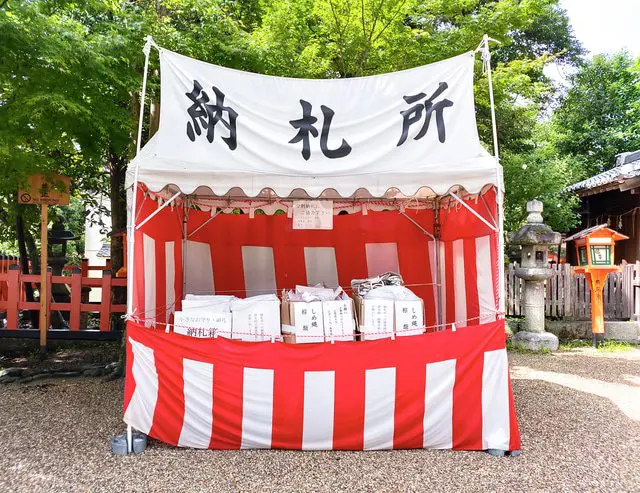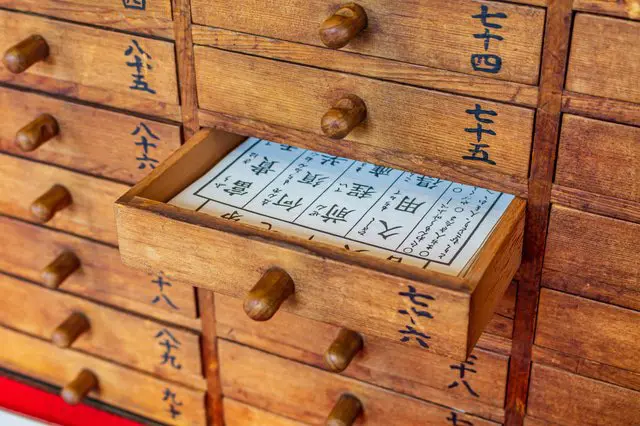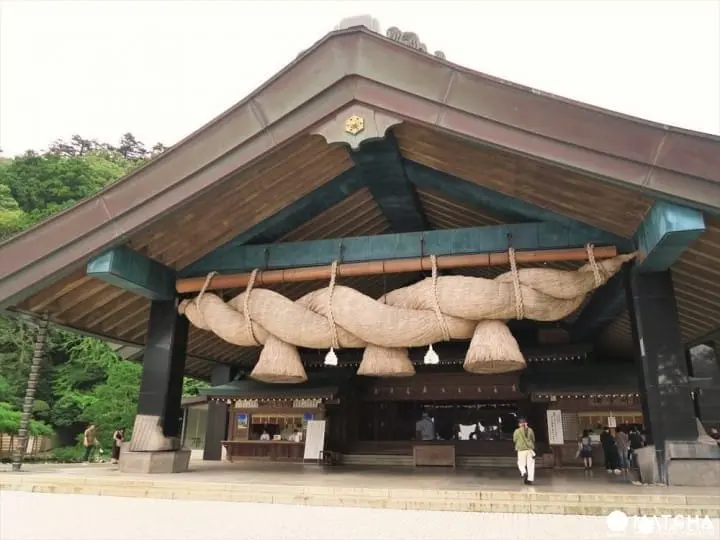Ring in the New Year with Hatsumode: Seek Luck at a Shrine or Temple

Hatsumode refers to the first visit to a shrine or temple in the new year. Learn about the customs that people observe on an annual hatsumode visit. Plus, its connection to ushering in good luck with the arrival of the new year!
Hatsumode describes the Japanese tradition of first visiting a shrine or temple in the new year. Annually, people pray in the hopes of having a good year blessed with luck. The act of visiting a shrine or temple for prayer is called "sanpai" in Japanese.
A Guide to Hatsumode
Hatsumode Traditions
1. When Is Hatsumode Observed?
2. What Do People Do during Hatsumode?
3. The Offering of Old Charms and Amulets
4. Draw Your Fortune
5. Purchase a Lucky Charm
6. Zodiac Symbols and Animals
Popular Hatsumode Destinations
7. Meiji Shrine (Tokyo)
8. Sensoji Temple (Tokyo)
9. Dazaifu Tenmangu Shrine (Fukuoka)
10. Izumo Taisha (Shimane)
11. Yasaka Shrine (Kyoto)
12. Fushimi Inari Taisha(Kyoto)
13. Sumiyoshi Taisha (Osaka)
When Is Hatsumode Observed?

Photo by Pixta
There are various opinions regarding when is the best time to go for hatsumode. Some people make their first visit to a sacred site on January 1. Others believe it's alright to visit anytime from January 1 to January 3 or from January 1 to January 7.
While it is generally accepted that hatsumode is carried out on the first day of the new year, the reality is that popular shrines are extremely crowded. It's become common for shrine or temple-goers to avoid this particular day due to the massive crowds.
What Do People Do during Hatsumode?
Visiting a Shrine or a Temple

Photo by Pixta
The basic rules for hatsumode are the same, whether you're visiting a small local place of worship or a famous site such as Meiji Shrine in Tokyo. The steps and etiquette are not difficult, so please check out the following articles for reference.
Read also
The Offering of Old Charms and Amulets

Photo by Pixta
It's customary for people to purchase amulets and good-luck charms at the start of the new year. By bringing charms purchased in the previous year and offering them to deities enshrined at the shrine or temple, your items will be purified and burned as they return to the heavens.
Ema: Wooden Wishing Plaques

Photo by Pixta
Writing your wishes on a wooden plaque called ema, which is found at shrines, will have them granted.
Draw Your Fortune

Photo by Pixta
When visiting a shrine for hatsumode, you can draw an omikuji fortune-telling paper to learn how much luck you'll have in relationships, health, finances, career, and other areas of your life.
Read also
Purchase a Lucky Charm

Various lucky charms can be purchased at temples and shrines. Items such as Hama-ya (a decorative arrow allegedly possessing the power to destroy evil), a yakuyoke amulet to ward off evil, and other talismans are commonly sold and purchased.
Zodiac Symbols and Animals

Photo by Pixta
In Japan, shrines during the Hatsumode New Year celebration prominently feature zodiac symbols and animals of the year, tied to the Juunishi Japanese Zodiac's twelve-year cycle. This practice holds cultural significance as these animals are believed to influence personalities and fortunes.

Photo by Pixta
Visitors who visit shrines in Hatsumode can see the zodiac assigned to the current year, adorning amulets, ema plates, and decorations. People participating in Hatsumode engage in prayers and wishes for health, happiness, and prosperity, aiming to align themselves with the positive qualities associated with each zodiac sign.
Popular Hatsumode Destinations
1. Meiji Shrine

Photo from Meiji Jingu: A Historical Shrine in Tokyo's Harajuku District
Meiji Shrine is arguably the most popular hatsumode destination in Tokyo. Visitors line up in the middle of the night on New Year's Eve to usher in another year on these sacred grounds.
The shrine is located in the Harajuku area within walking distance from Shibuya and Shinjuku Station. Even if you go in the middle of the night on New Year's Eve, the area is pretty safe since thousands of people will be visiting the shrine. We highly recommend it as a hatsumode destination for those in the Tokyo area on New Year's Eve.
2. Sensoji Temple

Photo from Sensoji Temple: The Highlights of Tokyo's Oldest Temple
Sensoji Temple in the Asakusa district is another favorite hatsumode destination. The guardian deity of Sensoji is said to grant wishes related to success in one's career and finances. This is why the temple attracts a crowd on January 1. But if you enjoy festive atmospheres, you'll surely like visiting Sensoji Temple at the start of the year.
3. Dazaifu Tenmangu Shrine

Photo from Fukuoka's Famous Shrine, Dazaifu Tenmangu - A Complete Guide
Tenmangu are shrines dedicated to Tenjin: the guardian deity of learning. There are Tenmangu shrines across Japan, but a particularly famous one is Dazaifu Tenmangu Shrine in Fukuoka Prefecture. Visitors nationwide come here annually for hatsumode, especially students who have important exams in the new year. It is believed that Tenjin will grant the wishes related to academic success.
We highly recommend visiting Dazaifu Tenmangu for the new year festivities if you are in the Kyushu region.
4. Izumo Taisha

As the shrine where gods gather once a year, Izumo Taisha has been an important center of Japanese spirituality for centuries. Many people select it as their first shrine visit of the year. This is especially true for those looking to improve their luck in relationships because the guardian deities of Izumo Taisha are closely associated with marriage.
5. Yasaka Shrine (Kyoto)

Photo by Pixta
During Hatsumode at Yasaka Shrine, visitors are drawn to this historic and culturally rich site in Kyoto, especially renowned for its association with the Gion Matsuri festival. People flock to Yasaka Shrine to pray for various blessings, including health, success, prosperity, relationships, and safety.
The shrine's specialty during Hatsumode lies in its deep-rooted connections to traditional festivals and its vibrant atmosphere during the New Year festivities, offering a unique blend of spiritual significance and cultural heritage for those seeking blessings and renewal as they embark on the new year.
6. Fushimi Inari Taisha (Kyoto)

Photo by Pixta
Nestled in Kyoto's embrace, Fushimi Inari Taisha stands as a spiritual gem, famous for its crimson torii gates winding up Mount Inari. This shrine isn't just a sight to behold; it's a gateway to tradition and peace. During Hatsumode, the New Year buzzes with seekers of blessings and good fortunes, enveloped in rituals and prayers under the watchful gaze of Inari, the deity of prosperity.
Beyond its vibrant corridors and serene sanctuaries, Fushimi Inari Taisha weaves a tale of timeless connection between people and nature. The winding paths lead not just uphill but inward, offering moments of reflection amidst the beauty of man and nature intertwined.
As the day fades into a golden dusk, Fushimi Inari Taisha stands as a symbol of reverence and renewal, a place where culture and calm flourish side by side. For those seeking a break from the rush of life, this shrine is a haven, blending tradition and tranquility in a harmonious dance that captivates both heart and soul.
7. Sumiyoshi Taisha (Osaka)

Photo by Pixta
Sumiyoshi Taisha in Osaka stands out as one of the premier destinations for Hatsumode, the traditional New Year's celebration. Renowned for its historical and cultural significance dating back over a millennium, the shrine's striking architecture and serene ambiance provide a perfect backdrop for this auspicious occasion.
Visitors are drawn to the shrine for its traditional festivities, including fortune-telling and cultural performances, creating a vibrant atmosphere for prayer and reflection. Sumiyoshi Taisha's association with safe sea travel adds a layer of significance for those seeking blessings for good fortune and protection during journeys. The sense of community and shared celebration at the shrine further enhances its appeal, making it a top choice for individuals looking to start the new year with spiritual connection and auspicious beginnings in Osaka.
In Conclusion
Even if you are not religious, you can participate in hatsumode since the event is public and open to anyone. To show respect when visiting a shrine or a temple, please wear formal attire and refrain from talking loudly. If you can celebrate the new year in Japan, why not wish for another prosperous one by giving hatsumode a try?
This is the official account of MATCHA's editorial department. Our articles feature useful travel information for visitors to Japan, from how-to guides to recommended places to visit.







































![[2026] Top 5 Strawberry Picking Spots in Tokushima, Naruto| Farms and Access Guide for January to May](https://resources.matcha-jp.com/resize/720x2000/2025/03/06-227165.webp)
![[Yamanashi/ Hokuto City] 4 Hot New Spots Opening in 2026](https://resources.matcha-jp.com/resize/720x2000/2025/12/12-252747.webp)


